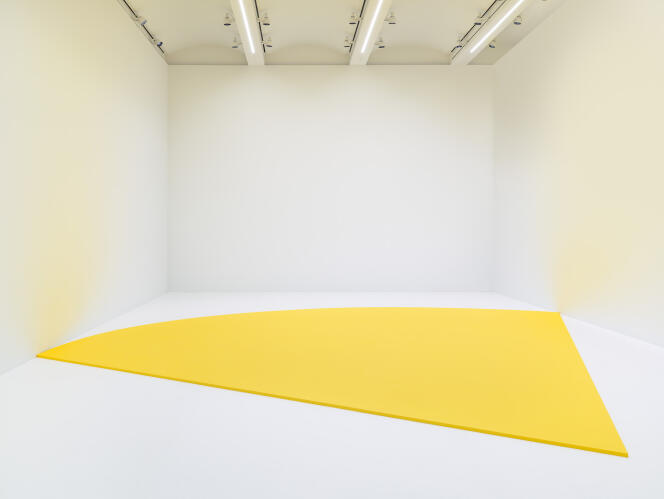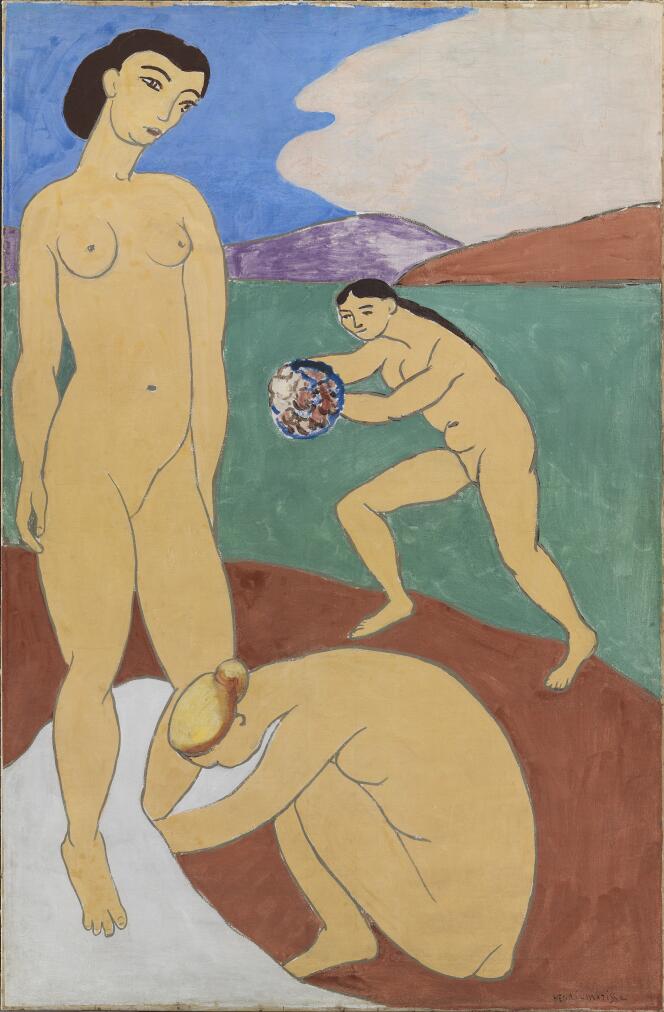


Up or down? That's the question at the entrance to the Fondation Louis Vuitton in Paris. Going up leads to the exhibition devoted to The Red Studio ("L'Atelier Rouge," 1911), by Henri Matisse (1869-1954). Going down means starting with the Ellsworth Kelly (1923-2015) retrospective. It's easy to understand why they are held together. Both painters shared the experience of colors pushed to their highest intensity, and Kelly admired Matisse throughout his life. Therefore, it is probably preferable to follow the chronological order, with the French artist serving as an introduction to the American.
More precisely, the Matisse work in question is The Red Studio, a canvas where the exploration of color surfaces with distinct sharpness and complexity due to its genesis. In October 1911, at the request of his Moscow collector Sergei Shchukin (1854-1936), Matisse began to work on a large painting, 1.81 meters high, 2.19 meters long, to be hung in the patron's mansion. It depicted the interior of the painter's studio in Issy-les-Moulineaux (Paris region), a vast, lofty space he had built in 1909 near the family home.
The subject had several advantages: The artist only had to look around, he could arrange older works at his leisure, and the canvas would naturally fit in with the Matisse works that Shchukin already owned. There were numerous paintings on the walls or floor, sculptures on stands, ceramics, furniture, and flowers. So far, nothing very unusual, especially considering Matisse's many references to his own work in later paintings.
In this anthology of himself, he included one of his main allegorical compositions, Luxury II ("Le Luxe II"), from 1907-1908; two canvases that refer to his early days and to Fauvism; a sexually charged nude; flowers; and nude bronze and clay figures: Autobiography and self-celebration go hand in hand. However, his approach took an unexpected turn. Having stopped work for some time – a month at least, perhaps longer – Matisse covered a large part of the surface with dense, matte "Venetian" red.

Only his canvases and bronzes escaped being covered, a process that appeared to have been done quickly, with swift, sweeping gestures. The floor and walls vanished beneath this flood. Previously, there had been blues, pinks, and ochres there, as revealed by the work of the restorers, showcased in a video that could have been longer given how informative it is.
The transformation was radical, so much so that Shchukin refused to accept The Red Studio in this state. The first buyer, a Londoner, only acquired it in 1927 to decorate the Gargoyle Club, a chic venue in the British capital. It remained there for a decade, was resold, and moved to New York, where the Museum of Modern Art (MoMA) bought it in 1949.
You have 64.07% of this article left to read. The rest is for subscribers only.
